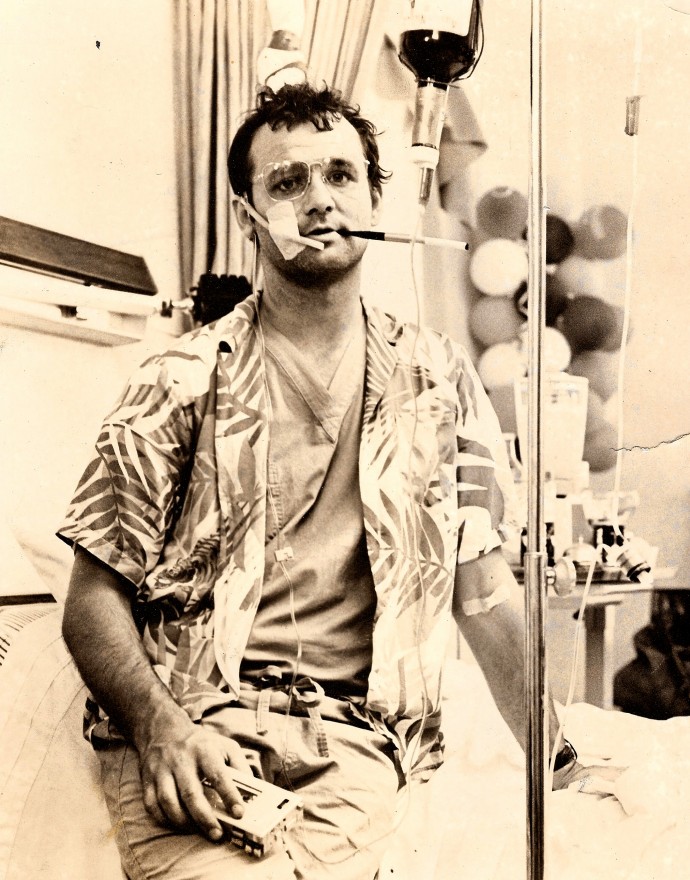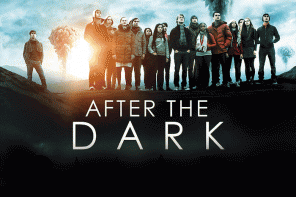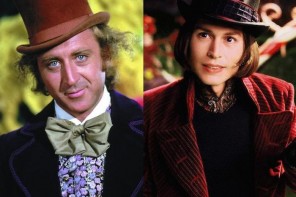Where The Buffalo Roam (1980) by Art Lison
Ever heard of Gonzo Journalism? If you haven’t, “Where The Buffalo Roam” is a good movie to catch up. It was out in Cinemas in 1980. The remake Terry Gilliam made eighteen years later became more famous than the original one, it was “Fear and Loathing In Las Vegas”. Even if both those movies have the same storyline, the strong artistic identities of the actors and the director don’t make them co-dependent.
“Where the Buffalo Roam” was directed by Art Linson (produced Fight Club, Into The Wild…) and is a journey into the world of Hunter S. Thompson. It’s a wicked world where reality can change within a second. He was the father of what is now called Gonzo Journalism, to sum it up quickly, i’ll let the master talk.
Hunter S. Thompson wrote, “Although I don’t feel that it’s at all necessary to tell you how I feel about the principle of individuality, I know that I’m going to have to spend the rest of my life expressing it one way or another, and I think that I’ll accomplish more by expressing it on the keys of a typewriter than by letting it express itself in sudden outbursts of frustrated violence. . . .”
Gonzo journalism is first person journalism fueled with lots of different substances. The personality and identity of the journalist are as important as the story he covers.
In the film, Hunter S Thompson is played by Bill Murray, constantly all over the place, questioning everything with or without reason, letting himself go into a dangerous paranoïa. In the first scene, you discover him, shooting his gun at a machine because it won’t shut up when told so. “Where The Buffalo Roam” is not a biography of Hunter S Thompson, it is freely adapted from his stories and his person.
His character in the movie is making his way through life with heavy reinforcement of whiskey (with ice), marijuana and lots of chemical drugs, It allows him to create his own world, but instead of staying alone in it, he brings people in with or without consent. While high, he makes a barbecue in a hospital room, takes blood from a nurse supposed to take blood donations.
Always with a cocktail in hand, he never forgets his little suitcase where he keeps of his beautiful secrets. He brings chaos wherever he goes. When asked if his methodology would work for every writer, he responds “I don’t advise drugs, liquor and violence to anybody, it’s just that in my case it worked”.
His recurrent companion, following him like a nemesis and dragging him in all sorts of stories is Lazlo (Peter Boyle). He is a lawyer defending the oppressed Cannabis smoker against an absurd system. The scene where you see a young boy taking five years for a pound embraces this idea of a crooked justice. Lazlo suddenly appears several times in the movie, out of the blue and forces Hunter to come with him, always for “good business”.
Both characters embody a different definition of freedom, and if Hunter seems more innocent than Lazlo, they are both living their ideas and dreams in their own way. They are tired of a system they want to change, but somehow they got lost on the way.
This permanence of absurd situations goes along with songs from Bob Dylan, Neil Young, Jimi Hendrix, The Temptations and so on. Hunter S Thompson was permanently floating between several sorts of realities. His famous coverage of Nixon’s 1972 presidential campaign is partly depicted in the movie. Art Linson found a good way to represent one of the many social frontiers Thompson is fighting against. There are two planes, one for the journalists the other for the technical crew. Thompson doesn’t fit in the first one. He is even thrown out to go into the second one, and the grand music playing as he enters conveys the idea that he is much more at home in this world. The place is already wrecked, with beers and joints going around like candies in a preschool. Still, Thompson is going to find the only “respectful” one in the plane and will give him acid without him knowing. He frees him from his duty towards time. That’s what he does to people: free them. He liberates them from the common reality we all have to live in
The journalists in the official plane are making fun of his colorful coverage of Nixon’s campaign and you understand the opposition of the two worlds. They are the dictatorship he is trying to run away from. Even when he becomes one of them thanks to a switch of identity, his mad world takes over once more allowing chaos to come where it wasn’t invited. His phrase at the end of the movie “it still hasn’t got weird enough for me.” makes a lot of sense after watching him for one hour forty minutes. He is not crazy. The world is.







